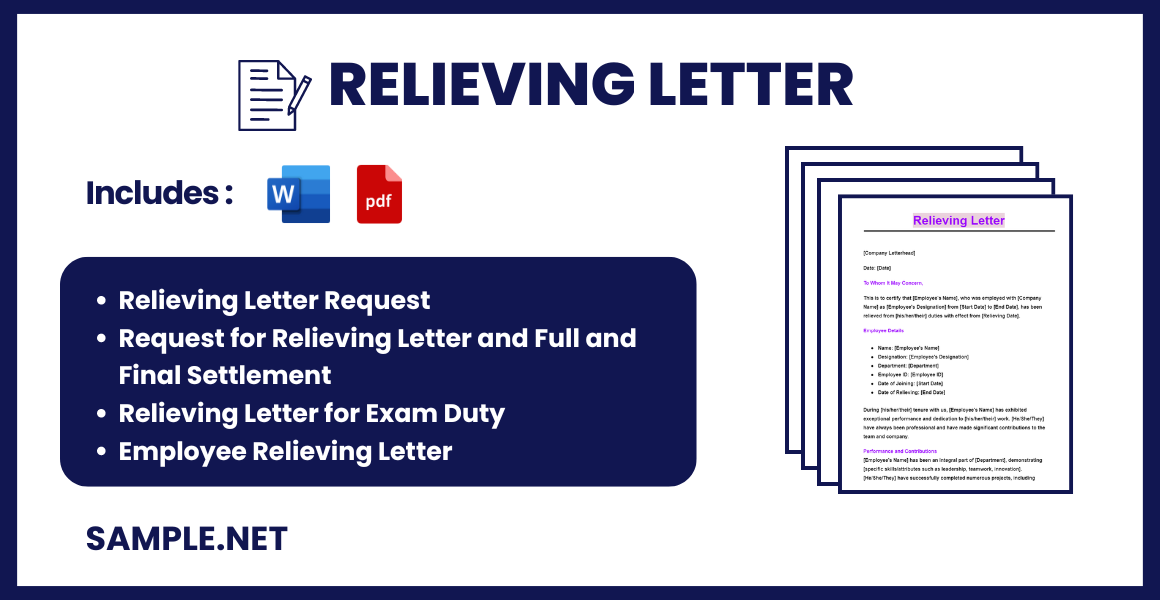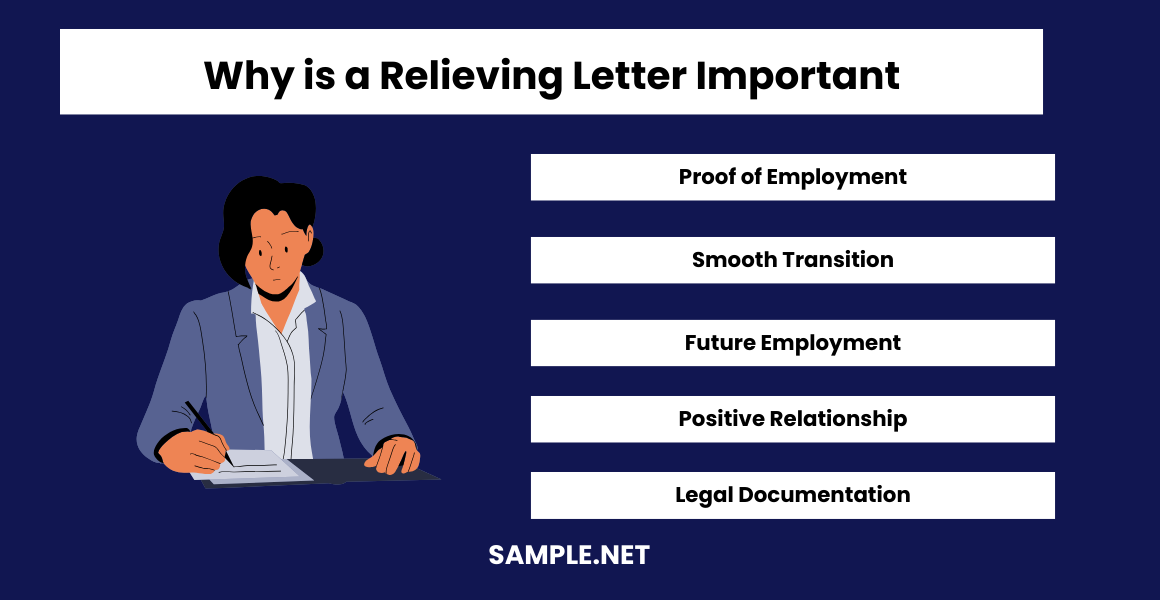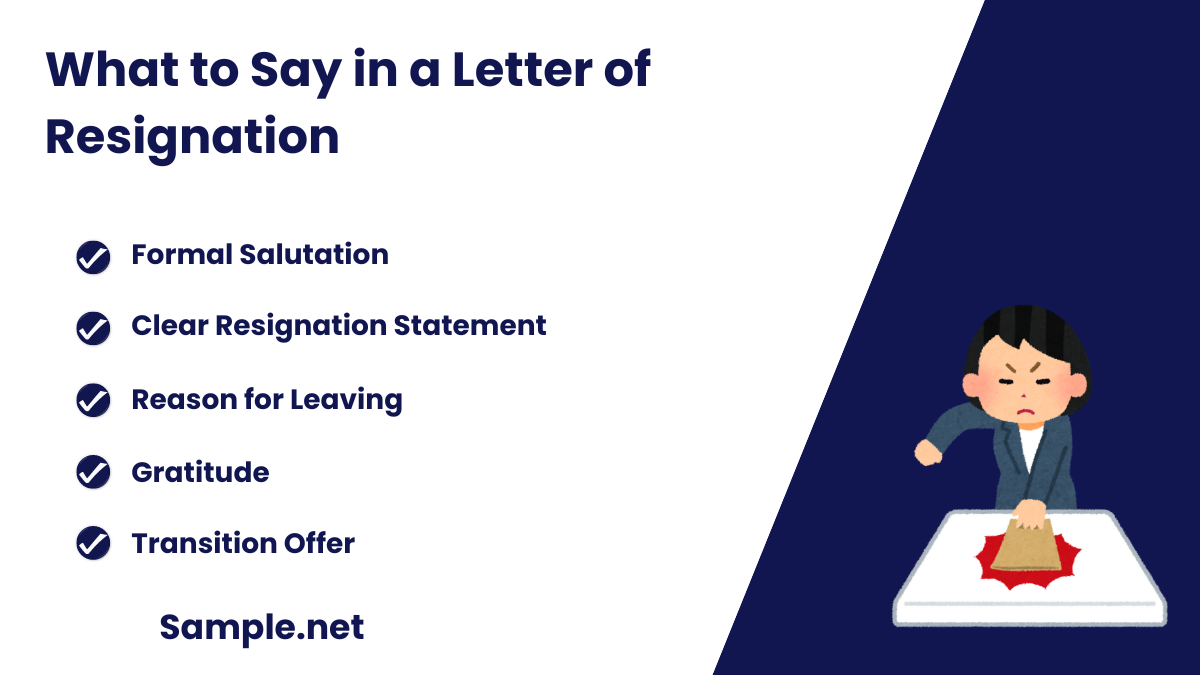Relieving Letter Samples
-
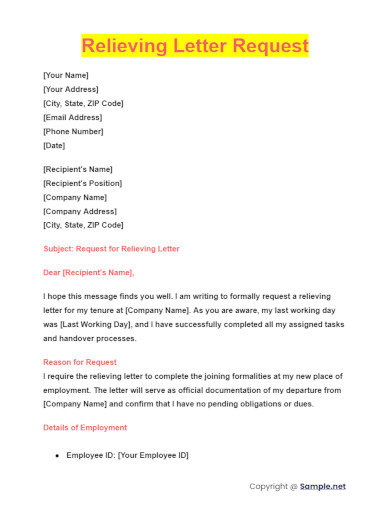
Relieving Letter Request
download now -
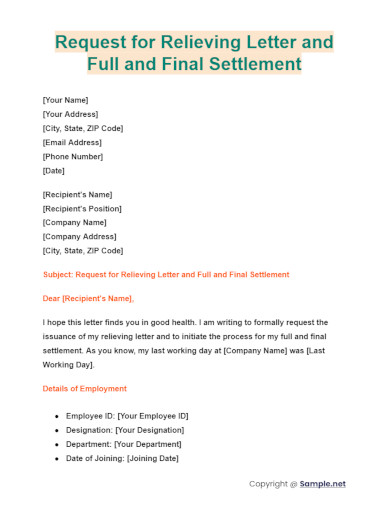
Request for Relieving Letter and Full and Final Settlement
download now -
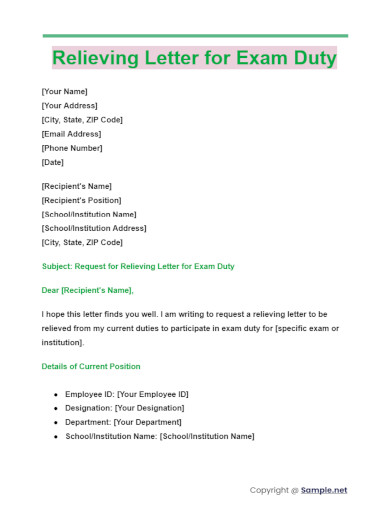
Relieving Letter for Exam Duty
download now -
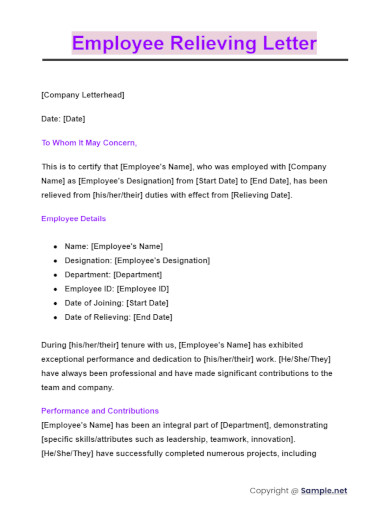
Employee Relieving Letter
download now -
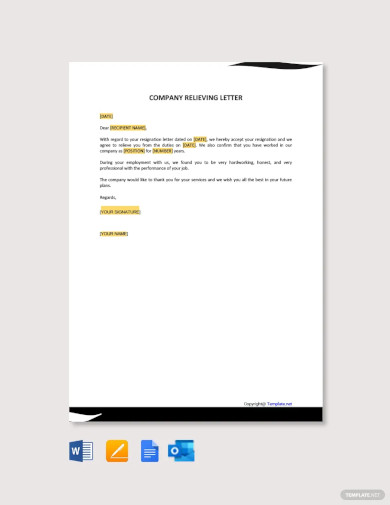
Company Relieving Letter Template
download now -
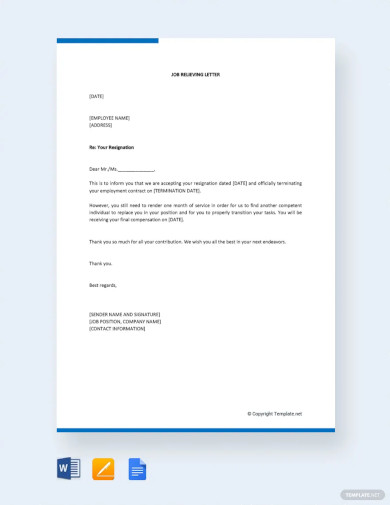
Job Relieving Letter Template
download now -
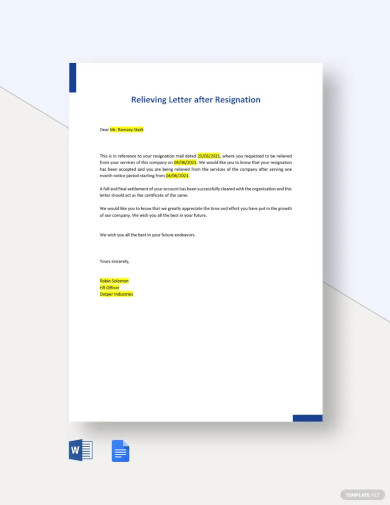
Relieving Letter after Resignation Template
download now -
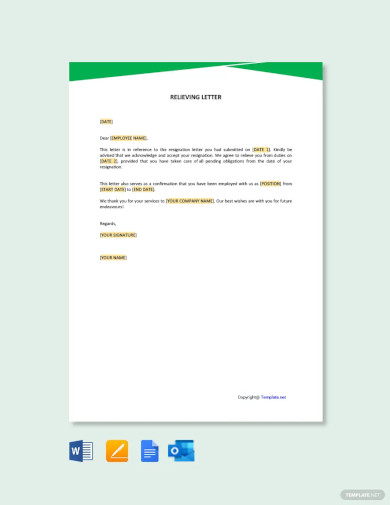
Relieving Letter Template
download now -
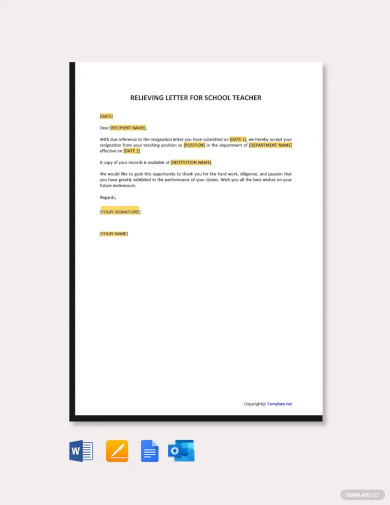
Relieving Letter for School Teacher Template
download now -
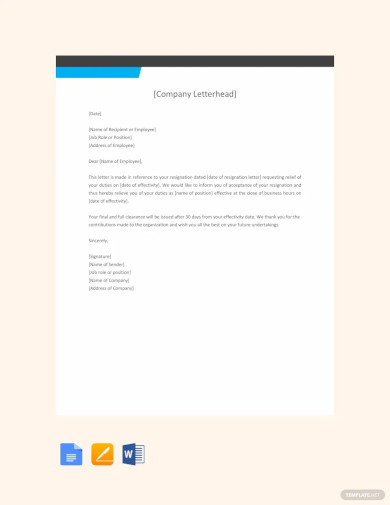
Employee Relieving Letter Format Template
download now -
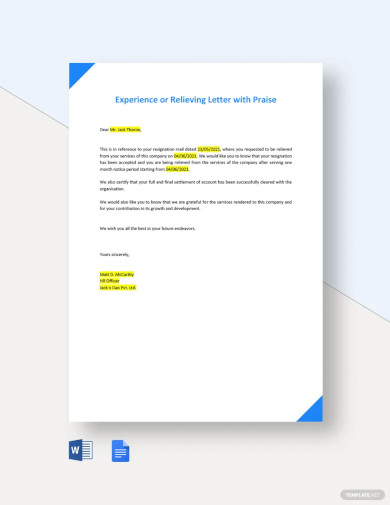
Experience or Relieving Letter with Praise Template
download now -
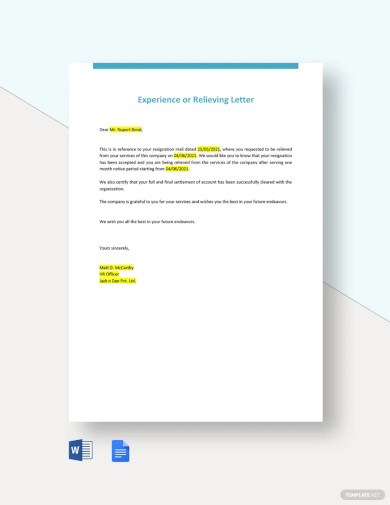
Experience or Relieving Letter Template
download now -

Relieving Letter Template
download now -
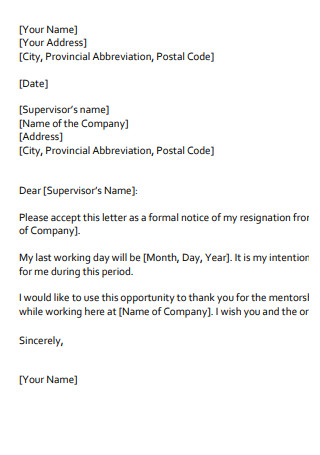
Sample Job Resignation Request Letters
download now -
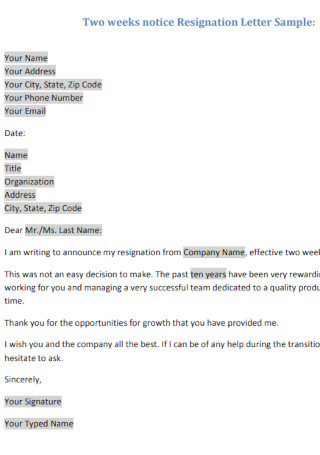
Sample Two Weeks Notice Resignation Letter
download now -
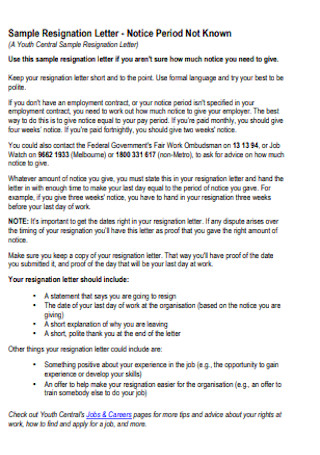
Sample Resignation Notice Period Letter
download now -
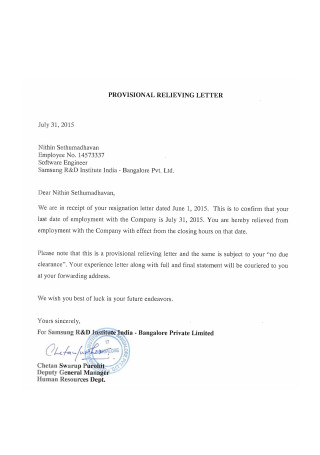
Professional Provisional Relieving Letter
download now -
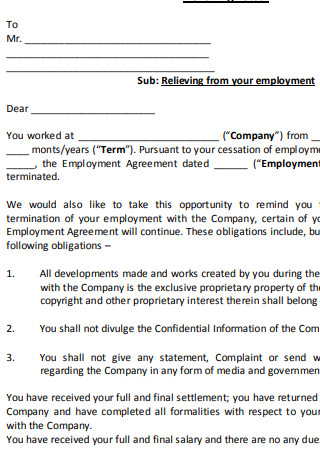
Govt Employee Relieving Letter Format
download now -

Employee Relieving Application Letter
download now -
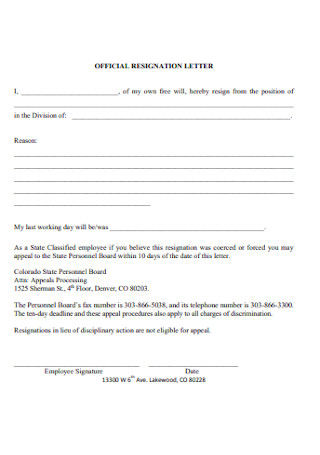
Official OriginalResignation Letter
download now -
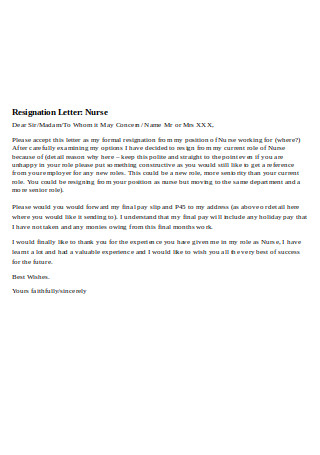
Nursing Certificate Resignation Letter
download now -
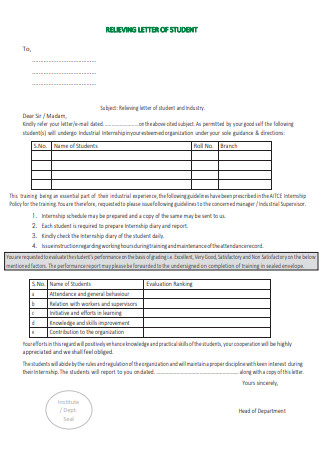
Relieving Superannuation Letter of Student
download now -
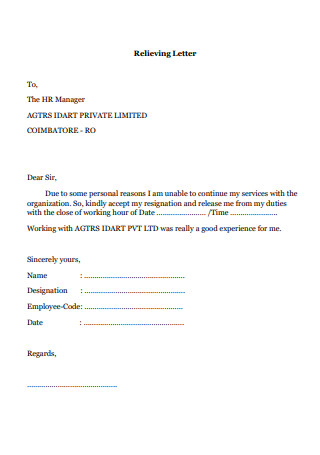
Relieving Organization Letterhead
download now -

Job Salary Relieving Letter
download now -
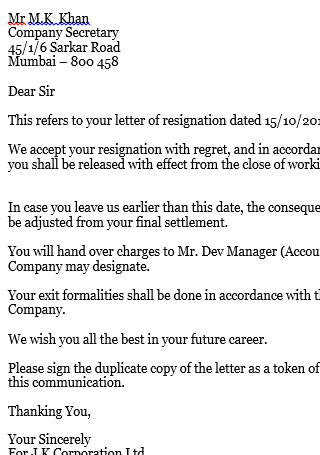
Employee Job Termination Relieving Letter
download now -
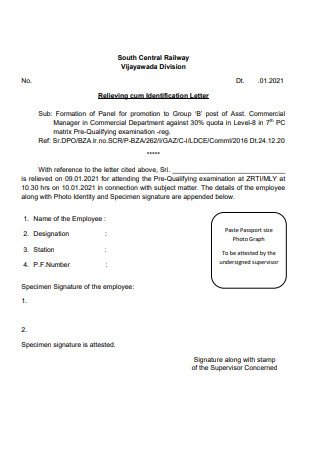
Relieving cum Signature Identification Letter
download now -
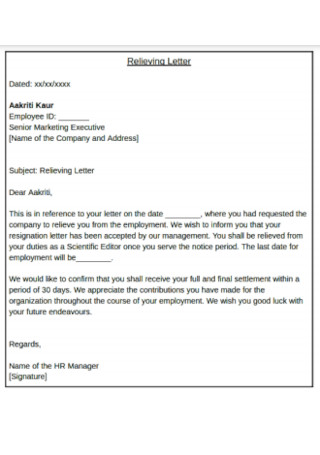
Immediate Effect Relieving Letter Sample
download now -

International Student Release Letter
download now -
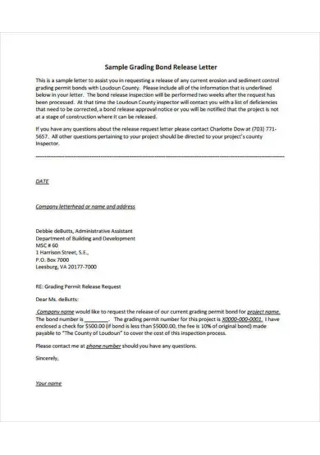
Bond Release Letter
download now -
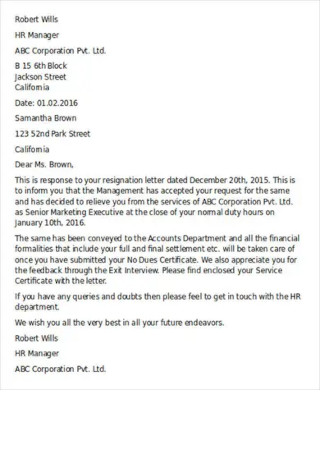
Relieving Letter Format in Word
download now -
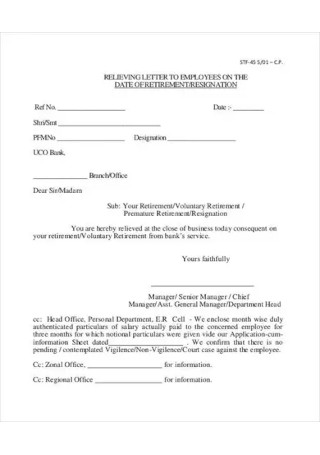
Printable Relieving Letter
download now -
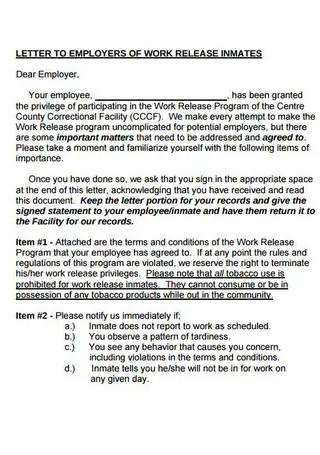
Employee Work Release Letter
download now -
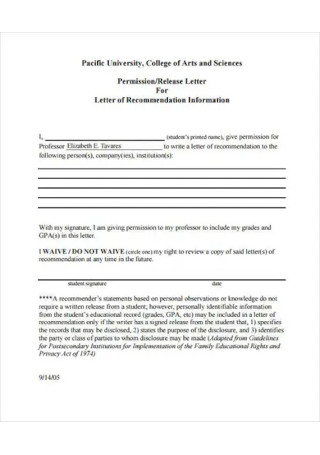
College Release Letter Template
download now -

Probationary Period Release Letter
download now -
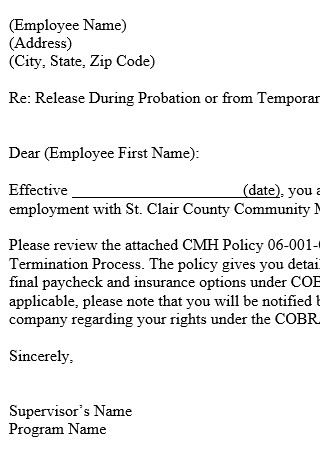
Employment Release Letter
download now -
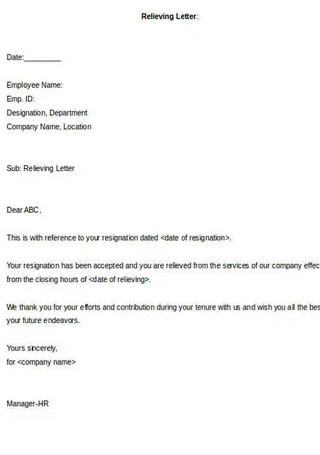
Relieving Letter Format for Employee
download now -

Simple Relieving Letter
download now -
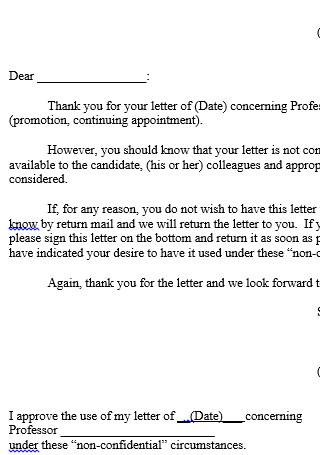
Release Letter in Word Template
download now -
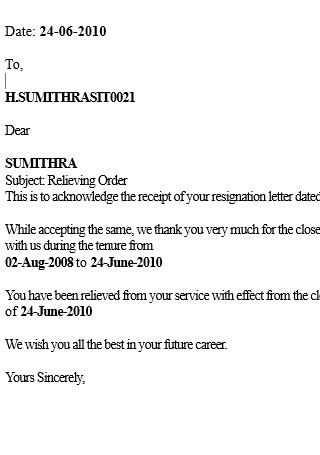
Job Relieving Letter Sample
download now -
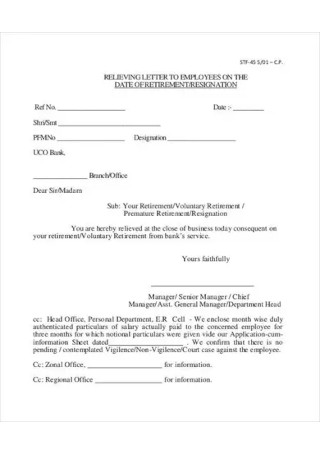
Relieving Letter to Employees
download now -
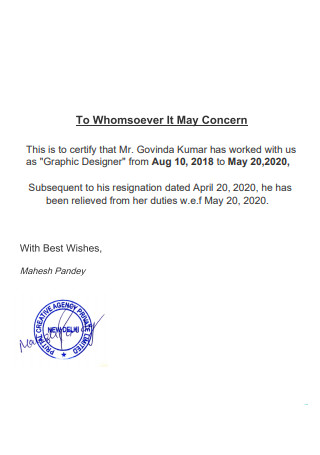
Relieving Letter Pay Slip
download now -
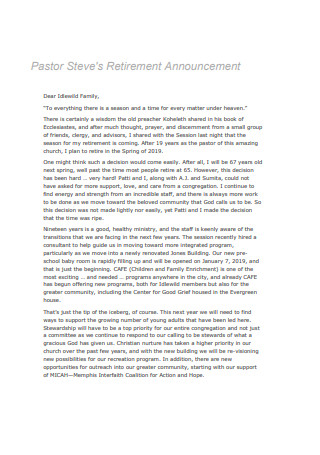
Paster Retirement Announcement Letter
download now -
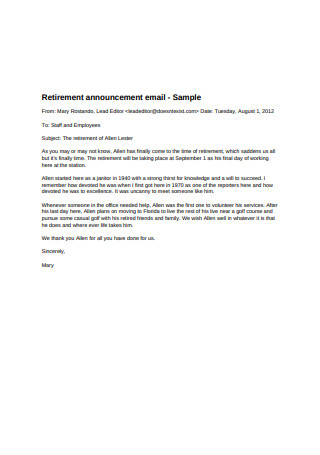
Retirement Announcement Email Template
download now -
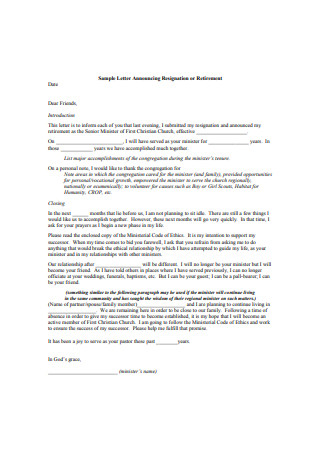
Sample Letter Announcing Resignation or Retirement
download now -

Relieving Letter Sample Template
download now -
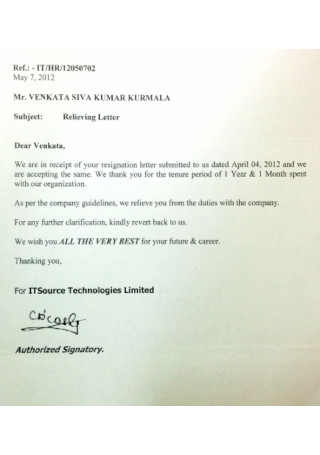
Source Relieving Letter
download now -
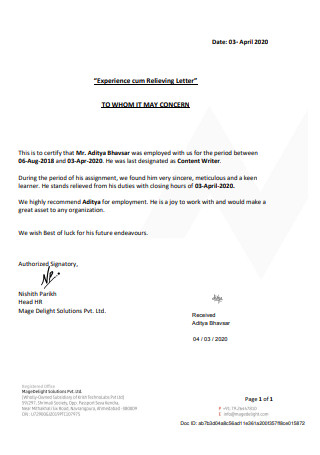
Experience cum Relieving Letter
download now
FREE Relieving Letter s to Download
Relieving Letter Format
Relieving Letter Samples
What is Relieving Letter?
The Components of a Relieving Letter
How to Write a Relieving Letter
Why do employees file for resignation?
What happens if an employee quits the company without notice?
What is the difference between a relieving, resignation, and termination letter?
Why is a relieving letter important to both the employee and employer?
Is a relieving letter only filed after a resignation?
Should a relieving letter be issued to the employee? What happens when the worker doesn’t receive a relieving letter?
How to Write a Good Letter of Resignation?
Why is a Relieving Letter Important?
How to Write a Relieving Letter for Your Employee?
What to Say in a Letter of Resignation
What is the Process of Relieving?
How do you politely ask for a relieving letter?
Who writes relieving letter?
Is signature mandatory on a relieving letter?
What is the last employer relieving letter?
Can an employer accept a resignation immediately?
What does relieved from the project mean?
What does relieved mean in employment?
Download Relieving Letter Bundle
Relieving Letter Format
[Company Letterhead]
Date: [Date]
To Whom It May Concern,
This is to certify that [Employee’s Name], who was employed with us as [Employee’s Designation] from [Start Date] to [End Date], has been relieved from their duties with effect from [Relieving Date].
Employee Details
- Name: [Employee’s Name]
- Designation: [Employee’s Designation]
- Department: [Department]
During [his/her/their] tenure with us, [Employee’s Name] has been diligent and dedicated to [his/her/their] responsibilities. We wish [him/her/them] all the best in [his/her/their] future endeavors.
For any further information, please feel free to contact us.
Best regards,
[Your Name]
[Your Position]
[Company Name]
What is Relieving Letter?
A relieving letter is a formal document issued by an employer to an employee upon resignation. It certifies that the employee has completed their notice period and has been relieved of their duties. This letter is essential for future employment verification and serves as proof of your tenure and conduct at the previous job.
According to the United States Bureau of Labor and Statistics, in February of 2021, an average of 3,357 Americans quit jobs in the US. The average ratio is at 2.3%. The number of resignations filed grew compared to the previous months. As a result, more Americans are leaving their jobs despite the pandemic.
The Components of a Relieving Letter
It is essential to know what a relieving letter should contain. As an employee, you should know if the content of the letter is sufficient to satisfy resignation. Here is the information found in a relieving letter completed by the human resources department of the company.
How to Write a Relieving Letter
After identifying the essential components of a relieving letter, you must learn how to create one. It’s critical to respond effectively to an employee’s resignation letter. A relieving letter accepts an employee’s resignation under the pretense that all conditions are satisfied between the employee and employer. Here are the steps in writing a relieving letter to employees.
Step 1: Preliminary Acknowledgement
Once an employee states the intention to resign, it is the employer’s responsibility to accept. However, require the employee of a written formal resignation, in the case of a verbal agreement between parties. The resignation letter will serve as a legal document between the involved parties. You should also take a look at our Board Resolution Letter
Step 2: Creating a Formal Response
In writing the relieving letter, it uses a formal business format. The document must include information about the company and the employee. The company information must state the company information, contact numbers, and address, and the employee data must show similarity with the company information. The letter must also indicate the issuance date of the relieving letter. You should also take a look at our Consent Letter
Step 3: Stating the Acceptance of Resignation
The first paragraph of the letter must contain notification that the resignation letter is received and accepted. The most crucial part of the first paragraph is stating the employee’s official last day of employment. It documents until the time the employee must report for work. You should also take a look at our Formal Letter
Step 4: Write Professionally but with Compassion
In the second paragraph of the letter, the writer must express an understanding of the situation. The response must carry a professional tone, at the same time showing a hint of compassion with the employee parting ways with the company. It is imperative to state that the circumstances, although unpleasant, are acceptable. In such cases, contemplate on offering to provide a reference letter for the employee. You should also take a look at our To Whom It May Concern Letter & Email
Step 5: Provide a Copy for Record Keeping
As protocol, provide a copy of the relieving letter for the company. There must be a copy held by both the employee and employer for record-keeping purposes. It serves as a protection for the company as well in the case of unforeseen circumstances. It is also noteworthy that the letter is printed on the company letterhead as it is an official document.
Why do employees file for resignation?
According to an article published by the NBC News website, about 79 percent of employees resigned from their posts claiming, that lack of appreciation was the main reason for leaving. It comes as a surprise that the main reason isn’t about compensation but the lack of appreciation from management. Here is a list of some reasons why employees decide to leave their companies.
- The feeling of being unappreciated and undervalued – Most employees find motivation in working when their contributions at work are appreciated. It can be as simple as verbal recognition or positive feedback.
- The lack of communication about proper compensation – One of the key factors to reducing turnover is fair compensation. It is proven time and time again transparency about salaries is just as essential. If companies understand the value of communicating salaries, then employees will stay with their respective companies.
- Insufficient flexibility, time off, and work-life balance – In the present time, people are working in remote conditions, and it greatly influences their life at home. Most employees are seeking out their employers in giving them enough flexibility in terms of work schedules.
- Restructuring the company without notice – In company restructuring, it is best to assure and coach employees heavily affected by it. The employer must give as much detail as they can to employees to have a clear understanding.
- Lack of modern equipment – It is critical to organize the business by providing the proper tools and equipment to all employees. It is also significant to guarantee there is sufficient training provided on the use of new equipment.
- Unrealistic goals and objectives – It is significant to set achievable smart goals and objectives to boost employees’ performance and motivation. In the long run, when employees are motivated, the company reaches its goals as well. Giving incentives and celebrating achievements will help in employee retention.
- No clear path for career development – Employers must provide clear and relevant information on career opportunities. Without a clear direction, employees may feel uncertain about moving forward and opt for a different company offering a positive development.
- Lack of managerial support – A great contributor to turnover is poor management. The management needs to hear out the needs of all employees and must address the problems as required.
- Lack of challenging roles – If employees feel the lack of challenging tasks, then employees will seek out new opportunities somewhere else. Employers must introduce different tasks and develop goals to maintain worker’s motivation and creativity.
What happens if an employee quits the company without notice?
As an employer, you cannot force employees to appear and work every single day. When an employee quits without notice, it posts confusion on the part of the employer. As stated earlier, there are several reasons for employees to resign. The sooner it is addressed, the better. It is also unlikely for an employee to leave without notice because it impacts their record if they choose to apply for a different job. However, if it does happen, there are things to consider. It is essential to stay calm and professional. There are protocols as stated in the employee handbook or the employment contract when situations arise. As an employer, it is also relevant to communicate with the team or department concerned. Discuss possible solutions and share responsibilities among the members. If applicable, reach out to the employee and offer a deal to come back to work. If all else fails, be ready to open an application to fill in the vacant position. You should also take a look at our Apology Letter
What is the difference between a relieving, resignation, and termination letter?
The human resource department or the immediate superior writes the relieving and termination letter to employees. Meanwhile, an employee creates a resignation letter to be handed over to the human resource department or the immediate supervisor. A relieving letter is an official letter presented to the employee, acknowledging and accepting their resignation letter. A resignation letter is a letter intended to state a voluntary departure from the company. The termination letter informs an employee through a notice or an immediate termination. Immediate termination only happens when there is grave misconduct or contract breach on the part of the employee. In a relieving and resignation letter, the employee can still receive accrued payment for the days worked. Meanwhile, terminations do not guarantee accrued salaries. You should also take a look at our Letter of Support
Why is a relieving letter important to both the employee and employer?
It is necessary to understand the relevance of a relieving letter to both the employee and employer as it can impact both parties in the future. Firstly, a relieving letter serves as an official document containing the assurance of separation from the previous employer. It is crucial information knowing that the employee is no longer associated with the former company. The relieving letter also states the clearance of any dues or obligations of the employee from the previous employer. Most companies and managements also consider exit interviews to be relevant. It means that the company would most likely issue relieving letters to all employees who file for resignation. The relieving letter contains previous job experiences along with soft skills the employee possesses. It helps employees to be in a better position and informs employers of what the employee can contribute. It displays the professionalism exhibited by both the company and the employee. The future employer will refer to the relieving letter of the positive relationship in the past job. Most companies also seek out relieving letters when recruiting new employees for reference. You should also take a look at our Petition Letter
Is a relieving letter only filed after a resignation?
A relieving letter is a letter of acknowledgment. The processing of the letter starts when an employee submits a letter of resignation. The human resource department cannot process a relieving letter without a letter of resignation. According to the data published by Statista Research Department, the number of retired workers receiving pension rose to 45.1 million in 2019. The results mean employees possess relieving letters as evidence of work. It applies to employees who file for a retirement letter because a relieving letter states the last day of employment and the accrued salary and benefits received by the employee. You should also take a look at our Appeal Letter
Should a relieving letter be issued to the employee? What happens when the worker doesn’t receive a relieving letter?
The company must issue a relieving letter to an employee if they filed for resignation and the employer has acknowledged and accepted the terms. In most states of America, a relieving letter is provided immediately at the time of resignation by the employee. In the case that the employer fails to give a relieving letter, the employee must communicate. There are plenty of reasons for the delay in receiving the letter. The common reasoning is the employee’s failure to finish assigned tasks or pass relevant documents. The relieving letter is similar to a clearance that assures the employee completed all required assignments. The employee sends a letter of acknowledgment to the employer confirming the completion of all responsibilities. You should also take a look at our Sponsorship Letter
How to Write a Good Letter of Resignation?
Writing a good letter of resignation is essential for maintaining professionalism and leaving on positive terms. Here’s a detailed guide:
- Start with a Polite Greeting: Address your resignation letter to your immediate supervisor or the relevant authority.
- State Your Intent Clearly: Mention your intention to resign and specify your last working day.
- Provide a Reason: Briefly explain your reason for leaving, ensuring it’s respectful and professional. This can be an Explanatory Letter.
- Express Gratitude: Show appreciation for the opportunities and experiences gained during your tenure.
- Offer Assistance: Mention your willingness to help with the transition process.
Why is a Relieving Letter Important?
A relieving letter is crucial for several reasons, serving both the employee and future employers. Here’s why:
- Proof of Employment: It acts as an official Letter of Employment verifying your tenure.
- Smooth Transition: Ensures a smooth transition by providing a clear end date and any remaining obligations.
- Future Employment: Essential for background checks and securing new employment.
- Positive Relationship: Helps maintain a positive relationship with your former employer.
- Legal Documentation: Serves as a formal record of employment separation. You should also take a look at our Job Reference Letter
How to Write a Relieving Letter for Your Employee?
As an employer, writing a relieving letter is an important duty. Here’s a step-by-step guide:
- Start with a Formal Greeting: Address the employee respectfully.
- Confirm Resignation: Acknowledge the receipt of their Resignation Letter.
- State Last Working Day: Clearly mention the employee’s last working day.
- Highlight Contributions: Briefly highlight the employee’s contributions and express gratitude.
- Contact Information: Provide your contact information for any future queries.
What to Say in a Letter of Resignation
A well-crafted resignation letter includes key elements that convey your message clearly and professionally:
- Formal Salutation: Start with a polite greeting.
- Clear Resignation Statement: Clearly state that you are resigning and include your last working day.
- Reason for Leaving: Offer a brief explanation, which can serve as a Letter of Explanation.
- Gratitude: Thank the employer for the opportunities and experiences.
- Transition Offer: Offer to assist in the transition process. You should also take a look at our Authority Letter
What is the Process of Relieving?
The relieving process involves several steps to ensure a smooth transition. Here’s a comprehensive overview:
- Submit Resignation: Start by submitting your resignation letter to your employer.
- Notice Period: Serve the notice period as stipulated in your employment contract.
- Handover Tasks: Complete a proper handover of your duties and responsibilities.
- Exit Interview: Participate in an exit interview if required by the company.
- Receive Relieving Letter: Finally, obtain your relieving letter, which serves as an Explanation Letter for your departure.
How do you politely ask for a relieving letter?
Politely ask for a relieving letter by sending an email to HR or your supervisor. Reference your Standard Job Resignation Letter and express gratitude for their assistance.
Who writes relieving letter?
The HR department or your direct supervisor typically writes the relieving letter after you submit your Official Resignation Letter.
Is signature mandatory on a relieving letter?
Yes, a signature is mandatory on a relieving letter to authenticate the document. This applies even if you submit an Immediate Letter of Resignation. You should also take a look at our Vacation Request Letter
What is the last employer relieving letter?
The last employer relieving letter is an official document issued by your previous employer confirming your end of employment, similar to a Teacher Resignation Letter.
Can an employer accept a resignation immediately?
Yes, an employer can accept a resignation immediately, especially if the employee submits an Immediate Letter of Resignation.
What does relieved from the project mean?
Relieved from the project means an employee is officially removed from their duties on a specific project, akin to receiving a Two Weeks’ Notice Resignation Letter.
What does relieved mean in employment?
In employment, “relieved” means an employee is officially released from their job duties, typically documented in a Board Resignation Letter or similar.
In conclusion, a relieving letter is an essential document for ensuring a smooth transition between jobs. This guide has provided you with a comprehensive understanding of what a relieving letter entails, how to write one, and the significance it holds. Whether you need a Sample Letter, Forms, or examples, this article has you covered. Additionally, if you require formal permission, an Authorization Letter is also discussed. Make sure to follow the guidelines to create a professional and effective relieving letter for your future endeavors.

